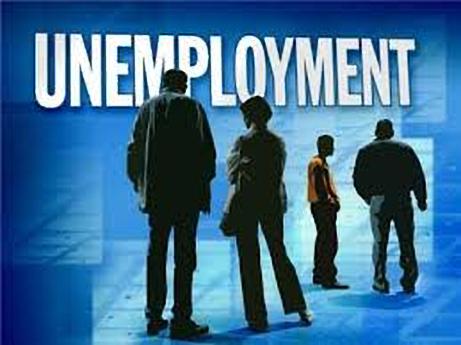America Adds 136,000 Jobs, Hits Lowest Unemployment Rate In 50 Years

WASHINGTON (AP)- The U.S. unemployment rate fell in September to a new five-decade low of 3.5%, while employers added a 136,000 jobs.
The figures show that hiring has slowed this year as the U.S.-China trade war has intensified, global growth has slowed and businesses have reduced their investment spending. Even so, recent job gains have averaged 157,000 in the past three months, enough to absorb new job seekers and potentially lower unemployment over time.
Despite ultra-low unemployment, which fell from 3.7% in August, average hourly wages slipped by a penny, the Labor Department said Friday in its monthly jobs report. Hourly pay rose just 2.9% from a year earlier, below the 3.4% year-over-year gain at the start of the year.
All told, the September jobs report is likely to keep the Federal Reserve on track to cut rates later this month for the third time this year to try to help sustain the expansion.
The slowing pace of hiring suggests that many employers are growing cautious in the face of uncertainties from President Donald Trump’s trade wars and a global economic slowdown. Businesses have added an average of just 119,000 jobs a month for the past three months, the smallest three-month gain in seven years.
The weakest sector of the economy _ manufacturing, which is likely already in recession _ cut 2,000 jobs in September. At the same time, retailers shed 11,400 jobs, and employment in mining and logging was unchanged.
The big gains last month were in health care, which added 41,400 jobs, and professional and business services, which includes higher-paying positions such as engineering and accounting. That sector added 34,000 positions.
Friday’s jobs data underscored the benefits of a hot job market for lower-paid Americans and traditionally disadvantaged workers. The unemployment rate for workers without high school diplomas fell to 4.8%, the lowest level on records dating to 1992. The rate for Latinos fell to 3.9%, also a record low.
With the U.S. economic expansion in its 11th year and unemployment low, many businesses have struggled to find the workers they need. That is another reason why hiring has slowed since last year, when job growth averaged 223,000 a month.
The employment figures carry more weight than usual because worries about the health of the economy are mounting. Manufacturers are struggling as businesses have cut spending on industrial machinery, computers and other factory goods. And overseas demand for U.S. exports has fallen sharply as Trump’s trade conflicts with China and Europe have triggered retaliatory tariffs.
A measure of factory activity fell in September to its lowest level in more than a decade. And new orders for manufactured items slipped last month, the government reported.
Persistent uncertainties about the economy are also affecting hotels, restaurants and other service industries. A trade group’s measure of growth in the economy’s vast services sector slowed sharply in September to its lowest point in three years, suggesting that the trade conflicts and rising uncertainty are weakening the bulk of the economy.
The job market is the economy’s main bulwark. As long as hiring is solid enough to keep the unemployment rate from rising, most Americans will likely remain confident enough to spend, offsetting other drags and propelling the economy forward.
But a slump in hiring or a rise in the unemployment rate in coming months could discourage consumers from spending as freely as they otherwise might during the holiday shopping season.
Consumers are still mostly optimistic, and their spending has kept the economy afloat this year. But they may be growing more cautious. Consumer confidence dropped sharply in September, according to the Conference Board, a business research group, although it remains at a high level.
Americans also reined in their spending in August after several months of healthy gains. The 0.1% increase in consumer spending that month was the weakest in six months.
Other parts of the U.S. economy are still holding up well. Home sales, for example, have rebounded as mortgage rates have fallen, helped in part by the Fed’s two interest rate cuts this year. Sales of existing homes reached their highest level in nearly 18 months in August. And new home sales soared.
Americans are also buying cars at a still-healthy pace. Consumers would typically be reluctant to make such major purchases if they were fearful of a downturn.



